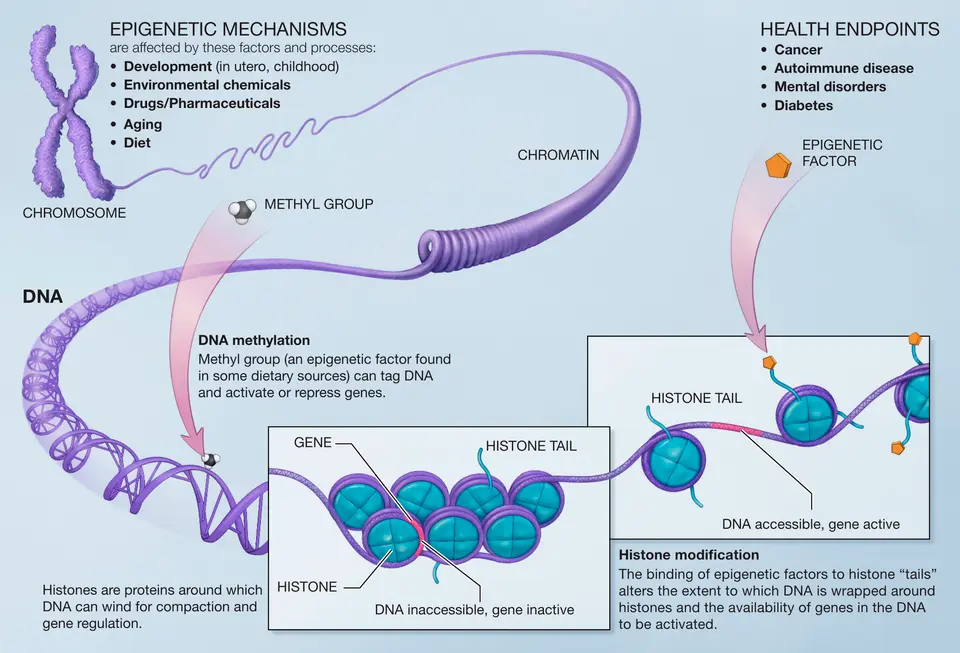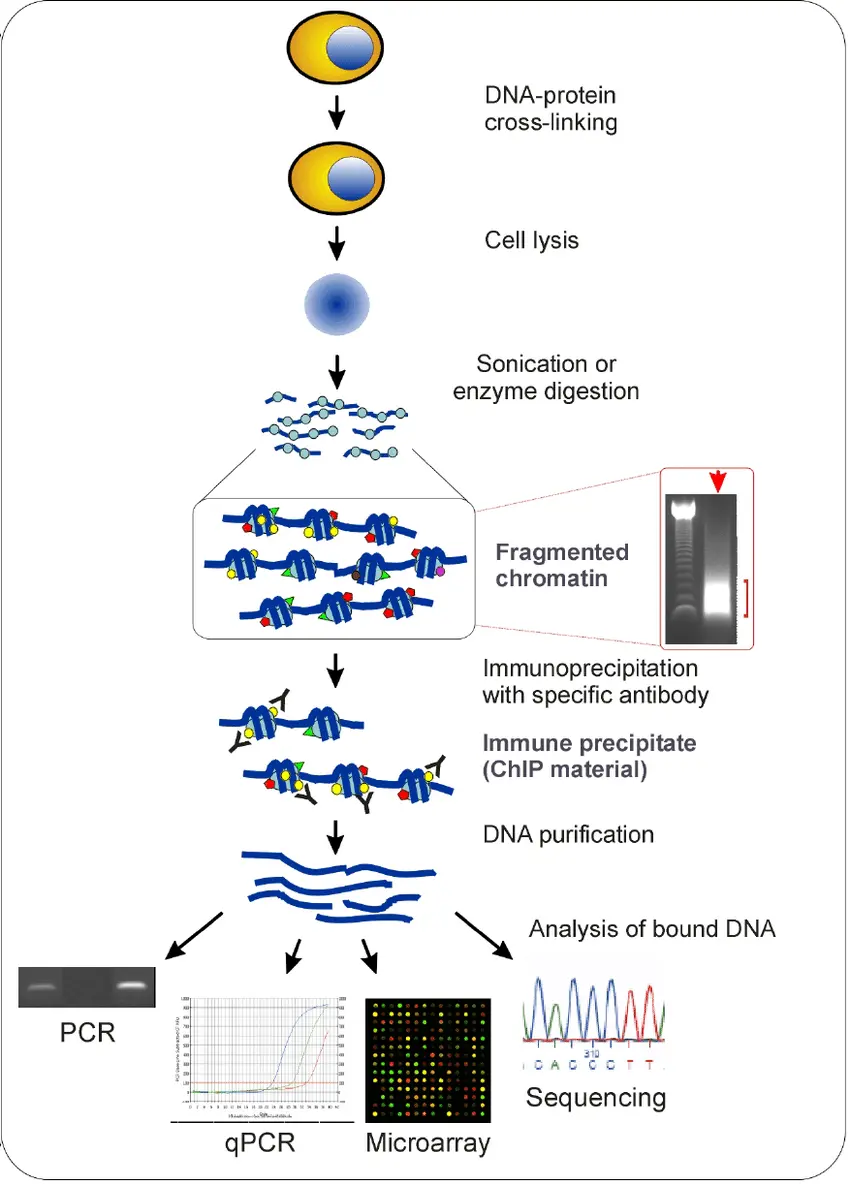The Epigenome: What Is It?
The epigenome adds a potent layer of control that dictates how, when, and where genes are expressed, while the genome supplies the fundamental blueprint for life. Histone proteins and reversible chemical modifications to DNA make up the epigenome, which controls gene activity without changing the underlying DNA sequence.
Determining how cells specialize, how illnesses like cancer develop, and how organisms react to environmental stressors all depend on an understanding of these changes.
The Two Pillars: DNA Methylation & Histone Modifications :
DNA methylation:
one of the most researched epigenetic markers, is the process of adding a methyl group to the 5' position of cytosine bases, typically in CpG dinucleotides. As a molecular switch that can turn genes off in particular tissues or developmental stages, this alteration usually suppresses gene expression.
Applications:
- Methylation biomarkers for early cancer detection
- Investigating stem cell developmental reprogramming
- Recognizing how genes and environments interact in diseases
Modification in Histones :
Histone proteins encircle DNA to form chromatin, a compact structure. The degree of DNA packing is regulated by chemical changes to these histones, including acetylation, methylation, phosphorylation, and ubiquitination.
- Histone acetylation is often associated with gene activation
- Histone methylation can either activate or repress transcription, depending on the site
Technologies Driving Epigenome Mapping
Bisulfite Sequencing (BS-seq):
A next-generation sequencing method called bisulfite sequencing (BS-seq) enables single-nucleotide resolution identification of methylated cytosines throughout the genome.
Chromatin Immunoprecipitation followed by sequencing (ChIP-seq):
Researchers can map the binding sites of DNA-associated proteins throughout the genome using the potent molecular biology technique known as chromatin immunoprecipitation followed by sequencing, or ChIP-seq.
ChIP-seq was first created to examine transcription factor binding, but it has since developed into a vital tool for researching gene regulation, chromatin structure, and histone modifications.
Why It Matters
The field of epigenome mapping is not merely a scholarly endeavor; it has practical applications in precision medicine, cancer detection, and the treatment of neurodegenerative diseases.
Scientists are creating epigenetic medications that target the enzymes that cause these changes by comprehending how gene expression is controlled epigenetically. This is creating a new avenue for therapeutic development.
The Future of Epigenetics
The creation of thorough epigenome maps across tissues, developmental stages, and individuals is quickly becoming a scientific standard as sequencing technologies advance in speed, affordability, and precision. These high-resolution maps have the potential to completely transform human health by revealing the epigenetic causes of neurological and autoimmune diseases, enabling personalized cancer treatments, and paving the way for new developments in predictive and preventive medicine.
Further Reading
To explore this topic in more depth, you can read this peer-reviewed article:
Epigenetic modifications and human disease



